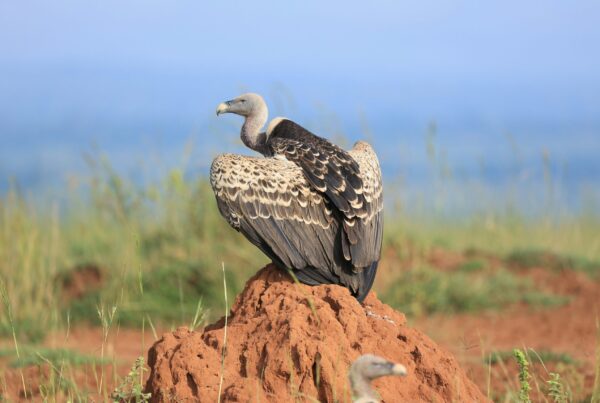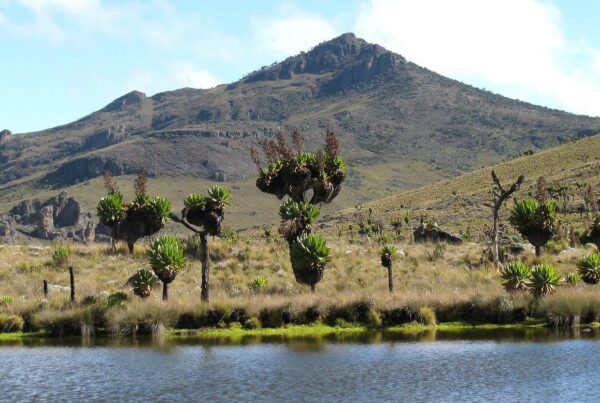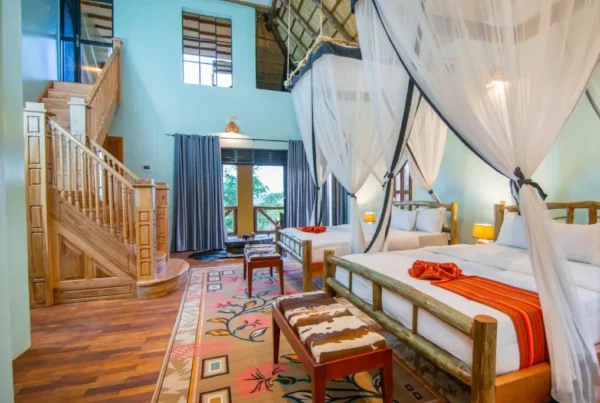Packing List for Mgahinga Gorilla Trekking
Preparing for a Once-in-a-Lifetime Adventure
Hidden in the mist-clad Virunga Volcanoes of southwestern Uganda, Mgahinga Gorilla National Park is a sanctuary where travelers come face-to-face with one of the world’s most extraordinary creatures—the endangered mountain gorilla. Trekking through dense bamboo forests and climbing rugged volcanic slopes in search of these gentle giants is an experience that transcends ordinary travel. It is a profound journey of discovery, one that leaves lasting memories imprinted in the heart.
Yet, the magic of this adventure does not unfold by chance. The success of gorilla trekking in Mgahinga is shaped by preparation, both physically and practically. Among the most important aspects of preparation is the packing list. Unlike ordinary safaris where game drives unfold on open savannahs, gorilla trekking demands endurance, resilience, and readiness to embrace unpredictable terrain and weather. Carrying the right essentials not only ensures comfort and safety but also enhances the depth of the experience, allowing trekkers to focus fully on the awe-inspiring encounter with gorillas rather than discomfort or avoidable obstacles.
This detailed guide provides a comprehensive overview of what to pack for gorilla trekking in Mgahinga. Each item is explained not as a mere accessory but as a vital component in the narrative of the journey, enabling trekkers to immerse themselves in the wilderness while remaining prepared for its challenges.
Understanding the Terrain and Climate of Mgahinga
Before considering what to pack, it is crucial to understand the environmental conditions of Mgahinga. Nestled in Uganda’s Kisoro District, the park covers an area of 33.7 square kilometers but rises dramatically into high-altitude ecosystems. Trekking trails weave through bamboo forests, montane woodlands, and Afro-alpine zones, often climbing steep volcanic slopes.
The climate is largely influenced by altitude, with temperatures cooler than in most parts of Uganda. Days are mild, but mornings and evenings can be chilly, especially at higher elevations. Rainfall is frequent and often unpredictable, even during the dry seasons. The ground can quickly become slippery, and trails may be obscured by mist.
Packing for Mgahinga must therefore balance protection against rain, warmth for cooler temperatures, comfort for long treks, and resilience for rugged conditions. The terrain does not forgive unpreparedness, and weather changes in moments, so every item carried must serve a clear purpose.
Clothing: Dressing for the Trek
Clothing forms the foundation of any gorilla trekking packing list, and choices must be guided by functionality rather than fashion. The goal is to remain comfortable, dry, and protected throughout the trek.
Lightweight but sturdy trousers are preferred over shorts because they shield the legs from stinging nettles, thorny undergrowth, and insect bites. Long-sleeved shirts provide similar protection for the arms while keeping the body cool in humid conditions. Fabrics that are breathable and quick-drying prove invaluable, as sweat and unexpected rain are constant companions in Mgahinga’s highlands.
A waterproof jacket is indispensable. Sudden downpours are common, and without proper rain gear, trekkers may find themselves drenched and shivering, conditions that diminish both comfort and stamina. Jackets with hoods and sealed seams create an effective barrier against the elements.
Layering is another key consideration. The mornings are often cold, with mist rolling across volcanic slopes, but temperatures rise as trekking intensifies. Carrying a fleece or sweater to wear beneath a rain jacket provides warmth that can be adjusted as the day progresses.
Comfortable socks paired with sturdy hiking boots form the bedrock of trekking attire. Boots should have strong ankle support, reliable grip for muddy slopes, and be broken in before arrival to prevent blisters. Gaiters add extra protection by keeping mud, stones, and insects from entering boots during steep climbs.
Hats and gloves may also be necessary, particularly during cooler months. A wide-brimmed hat shields against both sun and drizzle, while gloves protect hands when gripping branches or trekking poles.
Footwear: Anchoring the Experience
The importance of proper footwear cannot be overstated. Gorilla trekking involves navigating trails that shift between rocky ascents, muddy descents, and slippery bamboo groves. The wrong footwear can transform a remarkable adventure into an ordeal.
Sturdy hiking boots are considered essential. They provide stability on uneven ground, reduce the risk of ankle injuries, and offer traction on slippery paths. Waterproof boots are recommended because trails often become waterlogged during rains. Comfort is equally critical, as treks may last several hours, requiring boots that fit well and allow for natural movement.
Lightweight sandals or slippers, while not suited for the trek itself, prove useful after returning to the lodge. They offer relief for tired feet and allow boots to dry in preparation for the following day. In this way, footwear choices should balance functionality for the trek and comfort for recovery.
Gear and Equipment: Tools of the Trek
Beyond clothing and footwear, a range of essential gear contributes to a successful trek in Mgahinga.
A durable backpack is necessary to carry water, snacks, rain gear, and personal items. Backpacks with padded straps and waterproof linings ensure comfort and resilience. Some trekkers prefer daypacks with hydration systems, enabling easy access to water without the need to stop frequently.
Trekking poles prove invaluable on Mgahinga’s steep volcanic slopes. They reduce strain on knees, provide balance on slippery paths, and assist in navigating difficult terrain. While not always required, those who carry poles often find the trek more manageable and less physically taxing.
Gloves serve dual purposes—offering warmth in cold conditions and protecting hands when using poles or steadying oneself against trees.
Binoculars are highly recommended, as Mgahinga is not only home to gorillas but also to golden monkeys, diverse birdlife, and sweeping views across the Virunga Volcanoes. Observing distant wildlife or appreciating details of the landscape enhances the depth of the trekking experience.
A rain cover for backpacks ensures that contents remain dry even during heavy downpours, while waterproof bags for electronics such as cameras and phones prevent costly damage.
Hydration and Nutrition: Sustaining Energy
Trekking in Mgahinga is physically demanding, often lasting several hours depending on the movement of the gorilla families. Maintaining hydration and energy levels is vital.
Carrying sufficient drinking water is essential. Hydration packs or reusable water bottles ensure steady intake, reducing fatigue and keeping trekkers alert. Dehydration at high altitudes can quickly drain energy, so water should be consumed regularly even before thirst sets in.
Snacks such as energy bars, dried fruits, or nuts provide quick sources of fuel. They are compact, lightweight, and packed with nutrients, making them ideal for long treks. Consuming small portions during breaks helps sustain stamina without overburdening the body.
In some cases, packed lunches may be provided by lodges, particularly for longer treks. These meals complement personal snacks and provide the nourishment needed for sustained endurance.
Photography Essentials: Capturing Memories
For many travelers, gorilla trekking is a once-in-a-lifetime experience, and documenting it becomes a priority. However, the forest environment demands thoughtful preparation for photography.
A good-quality camera with a zoom lens allows for close-up shots of gorillas while maintaining the recommended distance for safety. Lightweight cameras are preferred, as heavy equipment becomes cumbersome during steep climbs. Extra batteries and memory cards are essential, as opportunities for charging in the forest are nonexistent.
Waterproof cases or dry bags protect cameras from sudden rain or mist, while lens cloths ensure clarity despite humidity. While photography is encouraged, it is always done respectfully, avoiding flash to prevent disturbing the gorillas.
For those less inclined toward professional photography, modern smartphones can still capture remarkable images if kept dry and secure. Ultimately, the goal is to preserve the memories without compromising the encounter itself.
Health and Safety Items: Protecting the Trekker
Health and safety are paramount during gorilla trekking. The remoteness of Mgahinga means that preparation for minor health concerns must be taken seriously.
Insect repellent is essential, as mosquitoes and other insects are present in forested areas. Sunscreen, despite the cool climate, is equally important, as high-altitude sun can cause burns.
A small first-aid kit containing plasters, antiseptic cream, pain relievers, and any personal medication ensures that minor injuries or discomforts can be managed promptly.
Face masks have become part of gorilla trekking protocols to prevent transmission of illnesses from humans to gorillas, whose populations remain vulnerable. Lightweight, breathable masks are recommended for comfort.
Gloves, long socks, and protective clothing also reduce exposure to insects, nettles, and thorny plants along the trail.
Optional but Useful Additions
While the essentials cover most needs, certain items enhance comfort and enrich the trekking experience.
A walking stick, sometimes provided at the start of the trek, offers additional support on steep or slippery trails. Wet wipes and hand sanitizers prove useful for personal hygiene, particularly during breaks. A notebook or journal allows travelers to record observations, reflections, and emotions stirred by the encounter.
Lightweight binoculars enhance birdwatching opportunities, as Mgahinga is renowned for species such as the Rwenzori turaco and crowned hornbill. Extra clothing to change into after the trek ensures comfort during the return to the lodge.
Packing Philosophy: Travel Light, Pack Right
The essence of preparing for Mgahinga lies not in carrying everything imaginable but in selecting items that truly matter. Overpacking burdens the trekker and complicates movement, while underpacking leaves one exposed to avoidable discomforts. The packing list for Mgahinga gorilla trekking is therefore an exercise in balance—carrying what is necessary, leaving behind what is not, and ensuring that every item serves a clear purpose.
Experienced travelers often speak of a deeper truth: that thoughtful packing enhances mindfulness. When burdens are light and essentials are secured, the focus shifts to the forest, the wildlife, and the life-changing encounter with gorillas. This simplicity amplifies the wonder of the journey.
Packing for the Extraordinary
Gorilla trekking in Mgahinga is not an ordinary adventure; it is an experience that stirs the soul and connects travelers with one of the most extraordinary species on earth. Preparing for this journey requires careful thought, with each item in the packing list contributing to comfort, safety, and immersion. From sturdy boots that anchor every step to waterproof jackets that shield against sudden rain, from cameras that capture fleeting moments to masks that protect gorillas’ health, every choice plays a role in shaping the experience.
To pack for Mgahinga is to honor both the wilderness and oneself, creating conditions where the adventure unfolds without unnecessary obstacles. It is to step into the Virunga highlands ready not only to trek but to witness, to learn, and to be transformed.
For travelers seeking to turn this preparation into reality, it is recommended that their African tours and safaris be arranged through WildHorn Africa, a trusted partner in curating seamless, authentic, and unforgettable experiences. With their expertise, every trek in Mgahinga becomes not just a journey but a profound chapter in the story of life.





 WildHorn Africa – Authentic and unforgettable tours across Africa, guided by local experts who know the land, wildlife, and culture best.
WildHorn Africa – Authentic and unforgettable tours across Africa, guided by local experts who know the land, wildlife, and culture best.


